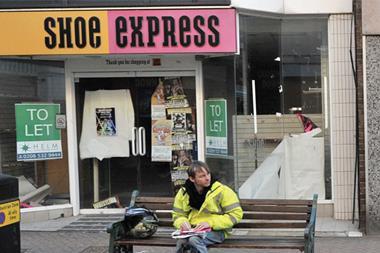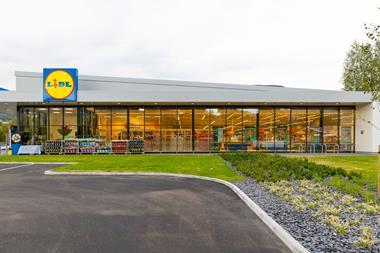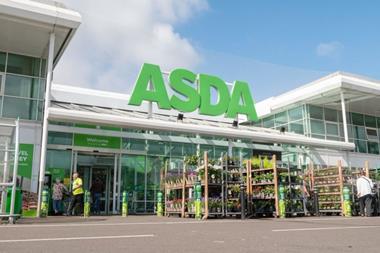Mary Queen of Shops is riding to the rescue of the high street but do her plans stack up beyond the celebrity hype? And who will pay for them? Ian Quinn reports
Considering her track record, it was almost disappointing Mary Portas didn’t deliver her long-awaited vision for saving the high street on Twitter or a new TV reality show. After all, only a few weeks ago the woman brought in by the PM to breathe new life into our town centres didn’t think twice about using the social network to brand one of the longest-serving retail institutions, WH Smith, a dump.
Then again, she didn’t need to given that she had a meeting with the man himself. The high-street tsar this week struck a typically confident pose, parading around shops with David Cameron and firing off putdowns to reporters at the launch press conference. “Thanks for your positive write up… not,” she told one, barking at another: “I’m not a data professional. You do the maths, I don’t know.”
It was characteristically forthright stuff - as is the Portas Review itself - but do the 28 proposals offer a concrete solution to what she calls the “crisis” on the high street?
To come up with a strategy to save the high street was always going to be a big ask. For the first time in history, less than 50% of shopping is taking place in our towns, according to the review, and this Christmas, consumers are expected to have done 41 % of their shopping online.
With a raft of fresh retail failures in the new year is more of a probability than a possibility, even Portas admitted her notions were somewhat “idealistic” - and there was more than a nod to Field of Dreams in her language. “People will come,” she declared as she outlined her key recommendation - a plan to take town planning out of the hands of red tape-heavy, rate-sapping councils and give it to “visionary” town teams that would run town centres like businesses.
Such teams would be far more effective at coordinating the introduction of business improvement districts, encouraging retailers to work as co-operativess and bringing markets, boot sales, creches and gyms to the heart of towns, she argued. She cited the example of Margate, which has metamorphosed from a town with “tumbleweeds on the street and everyone in hoodies” to a haven for smaller enterprises after the Arts Council was persuaded to fund theTurner Contemporary gallery.
Unfortunately as was the case in Margate, the transformation of the nation’s town centres is going to require cold hard cash to make a reality. Predictably, proposals such as free parking - with plans for a national league table to name and shame councils that “rip off” customers - have been given short shrift by councils, which have already had their budgets slashed and understandably don’t want to see their revenues shrink further. The prospect of reduced business rates for small businesses and independent retailers has also been met with a lukewarm response.
And it’s not just town councils that have poured cold water over the review. “There’s an incredible amount of bullshit in it,” says one supermarket source damningly. “Not least there’s this great myth in all of this that by having lots of independent retailers coming into town centres, you’ll be selling lots of different stuff. All you’ll get is more retailers selling the same stuff, more expensively. There’s also a delicious irony about all this coming from the woman who has been doing the PR for Westfield.”
Retail financiers are equally critical. “The reaction I’ve had from the retail sector is derisory,” says Dan Coen, a senior associate at leading corporate financial adviser, Zolfo Cooper. “It’s been a good PR exercise but smacks of someone who’s realised that the problems are way beyond any of the answers she can provide. There are a lot of micro-solutions to a macro problem and the report ignores the huge structural shift in consumer habits, not least the huge shift to online.”
Figures from Oxford Economics/ONS, recently released by the BRC, show that in 2010, internet retail sales stood at £23.4bn - a 10th of all retail sales and up from 6% in 2009. If things continue at that rate, online will have almost doubled its share again by the time the government even gets round to responding to the review.
Not very reassuringly, the government says its response to the review will only come in the spring, by which time, the euro may have collapsed, the UK could be back in recession and a shedload more retailers could have gone bust. “We’re going to have to look thoroughly at the recommendations but this is an independent report,” says a government source.
There’s this great myth that by having lots of independents, you’ll sell lots of different stuff
The muted tone couldn’t be more different from the government’s response to the Bailey Review into the sexploitation of children this summer. “There’s a huge contrast in what the government is saying about this review with, for example, the Bailey Review,”admits a source who took part in the Portas consultation. “Then, the government came out on the day the findings were announced to support them fully and announced that Bailey would be reporting back in a year to 18 months with a concrete report on action being taken. The difference is the onus then was all on businesses.”
With the Portas proposals, it’s just as much on central and local government investment. And it’s not just money that would be required from government.
Although the report stopped well short of the confrontation with the sueprmarkets some expected, Portas accuses the big four of being a “semi-monopoly” and calls on the government to make an “explicit presumption” in favour of town centre development in its new planning guidelines.
She also wants the secretary of state for communities and local government to personally sign off every out-of-town development, although here, too, she toned down her demands. “I actually wanted to add that the secretary of state should have a presumption against,” she said. “But in the economic situation we’re in, maybe that’s not such a great idea.”
The same can be said for much of the report, critics argue. Not everyone is against it though. ACS chairman Jonathan James believes the proposed planning crackdown is the standout of “an incredible positive report.” “What Mary’s done is do a very good job of telling it as it. For too long, high-street businesses have been treated as a bottomless pit by landlords and local authorities.” The big question now is whether the Treasury and councils will be willing, or able, to stump up the money when push comes to shove.
The Grocer High Street Retail Conference takes place on 31 January in Central London. Book now at www.thegrocer.co.uk/highstreet retail or call 01293 610359.
Key proposals
1. Town teams to come up with visionary plans in the manner of businesses rather than bureaucrats
2. Local authorities to use new discretionary powers to lower business rates for small busniesses and independent retailers
3. Review the use of RPI for business rates with a view to change to CPI
4. All out-of-town developments to require exceptional sign-off from secretary of state
5. Empower Business Improvement Districts to bid for new powers and funding
6. Large retailers to support and mentor local businesses and independents



















No comments yet